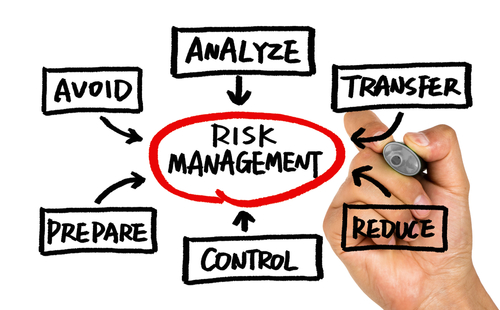It astounds me when people do not understand that in any given enterprise, you are balancing a myriad of tensions across operational and executional risk that if not taken seriously will surely give rise to an onset of rapid diminishing returns, inefficiencies and inherently de-couple the modus operandi of the firm. Charles Handy (Irish author/philosopher specialising in organisational behaviour and management) asserts that “There’s no good just being better…you got to be different” and this roots itself as didactic advice not only for self improvement but also for any focused effort that proclaims to radically transform and innovate the enterprise. Taking operational risk seriously requires a cardinal re-think of how you structure your internal learning models to cope with higher order behaviours that emerge from the interactions of many simple components without a central controller. If your enterprise is truly innovating and you want to get a deep understanding of managing the cascade of unintended consequences and prevent decay into either inertia or chaos, then you must appreciate the following mental model that ensconces the need to be efficient and creative at the same time.
To Be Efficient (Code A)
• You stick to your knitting
• You exploit what you know
• You meet current customer needs
• You plan
• You demand accountability
• You impose process and structureTo Be Creative (Code B)
• You think outside the box
• You explore what you don’t know
• You anticipate future customer needs
• You let things emerge
• You allow freedom and flexibility
• You avoid process and encourage unstructured interaction
Here, you create a mystery of the middle as Code A encourages discipline but Code B encourages creativity. Code A is more mainstream in companies (and they proclaim that Code B is counterculture). In order to manage operational risk properly, you need to be efficient yet anticipatory and hence its important to acknowledge that efficiency is not really needed until the end of the innovation process. In strategic planning contexts, you need to model for what if scenarios. Remember, organisations (like elephants) never forget and there is a strong resisting force of inertia against adopting new strategies and forgetting classical and archaic management roots when exploring solutions to mitigate risks.
It is the risk resulting from breakdowns in internal procedures, people and systems and is often taken at face value in corporate entities. Organizations of all sizes and in all industries continue to seek out best practices for identifying and managing key operational risks. Organisations also want a governance structure to embed those best practices broadly and yearn for simple frameworks that lead to desirable complex outcomes. So how do we approach this? What is the focal point of reference if we want to be proactive, reactive and evolutionary at the same time? The answer is to look at how nature adapts three fundamental concepts that drive its success: recombination, cooveralution and self-organization. Lets call these the ‘trinity of adaptation’ and delineate these as toolsets that anyone can use regardless of enterprise size or scope.
Firstly, its important to note that nature approaches the notion of efficiency not by designing solutions from scratch but by recombining successful elements to create new versions, some of which undoubtedly thrive! By converting resources into energy better – nature sets the imperative for businesses to form strategic alliances to create new capabilities and inhabit new market niches. The alliance between Electronic Data Systems (EDS), Hewlett Packard (HP) and HP’s VeriFone unit demonstrated (with strong reference to recombination) a paragon of network collaboration wherein competing vendors pooled their technologies in an effort to make the development of e-commerce capabilities better. The First Global Commerce Initiative proposed an open-architecture that supported all types of electronic payments. Each participating entity contributed a particular expertise or enabling technology . Here, EDS got access to smaller institutions through its experience as a service integrator; VeriFone provided its integrated payments system for e-commerce and point of sale payments plus the use of smart cards and ultimately HP put forward its significant hardware capabilities and market clout to the mix. This is an exemplar of network collaboration where competing firms can coalesce to drive innovation and significant improvements to the aggregate value chain.
The second notion of Co-Evolution (whilst sounding complex) is inherently simple. Each species adapts its environment which in turn inspires co-evolution. The environment for fitness and breakthroughs are often required to transcend old models. Consider a business example that is at this point so familiar that it is nearly invisible. More transistors on a chip means more processing power, which in turn allows for more complex and feature-laden software applications. Such applications in turn place greater demands on processing power. The continual advances of computer hardware and software represent an evolutionary cycle. Alaska Airlines took this notion and pursued it by firstly streamlining its check in operations by replacing many of its counter staff with self service alternatives.
Thirdly (but of course not lastly because we are all evolving); self-organisation is required to bridge the gaps in reactive and proactive stances against operational risk. This is a process that is intrinsically bottom up but which is cultivated by context and vision. It takes many forms, from simple execution of tasks and responsibilities to an iterative idea generation process that spawns a plethora of behaviours and processes. The tenets of self organisation have an amazing ability to adapt. For example, when a tree is exposed to light on only one side, it preferentially grows branches on that side; if an animal is not getting enough carbohydrates, it makes them out of proteins. These are non-linear reactions and as such, can give rise to multi-variate outcomes.
Collectively, operational risk is something that needs to be prudently managed. All entities in the ecosystem need to be engaged through a qualitative and quantitative model that creates reinforcement loops on the back of external and internal feedback. By doing so, you will not only influence agile and lean behaviours but also emergent ones that will act as a shield in the face of non-linear change and allow you to truly embrace learning as a tool to manage the unknown!


